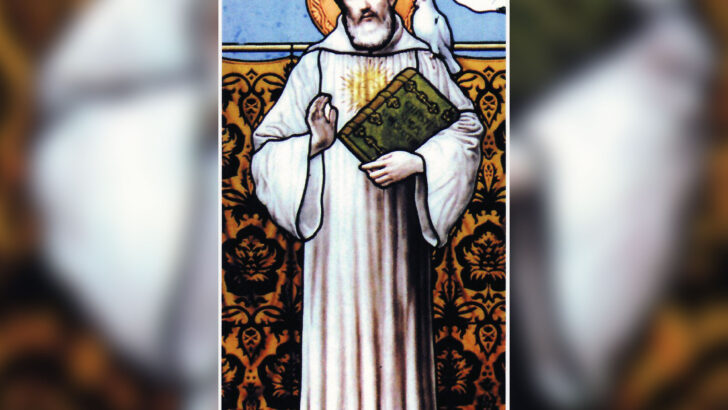Saint of the week
St Columbanus, also known as St Columban, was a prominent figure in early Irish monasticism who later became a missionary to continental Europe during the early Middle Ages. Born in 543 in Leinster, Ireland, Columbanus was well-educated from an early age. Being a handsome man, he was troubled by intense temptations and, seeking spiritual guidance, turned to a local religious woman who lived as a hermit. Inspired by her example, he chose to embrace the monastic life, despite his mother’s strong opposition.
Columbanus first studied under Abbot Sinell of Cluaninis, and later joined the monastery led by Abbot Comgall, later canonised as St Comgall. It was here, under Comgall’s direction, that Columbanus formally embraced monasticism. The Bangor community’s austere discipline and intellectual rigour drew a growing number of monks, and Columbanus was deeply influenced by this environment.
After years of secluded prayer and contemplation, Columbanus felt a calling to missionary work abroad. Around 583, he set out for Gaul with twelve fellow monks. Reaching France in 585, he found the Church there weakened by barbarian invasions and internal corruption. Welcomed by King Gontram of Burgundy, Columbanus and his companions established a monastery in a deserted Roman fortress in the mountains. Although remote, the monastery became a popular pilgrimage site and attracted so many vocations that two additional monasteries had to be established.
These monastic communities remained under Columbanus’s authority and adhered to the distinctly Irish monastic traditions in which he had been formed. As they grew, Columbanus himself increasingly sought solitude, spending extended periods in a hermitage and communicating with his monks through an intermediary.
However, Columbanus’s adherence to Irish practices occasionally put him at odds with local bishops, particularly over the calculation of the date of Easter. His fearless stance against immorality also led him to rebuke the local king for his licentious lifestyle, insisting that he marry. This threatened the power of the queen mother, who had him deported to Ireland. However, his ship was driven back to shore by a storm, allowing him to continue his work on the continent, ultimately making his way to Italy.
In Italy, Columbanus was welcomed by the ruling Lombards but found the Church divided by heresies. He wrote against Arianism – a belief that denied the divinity of Christ – and urged Pope Boniface IV to help restore the Church’s unity. Although he disagreed with the Pope on certain theological points, Columbanus expressed his loyalty to the papacy, affirming his commitment to the Chair of Peter.
In 614, the Lombard king granted Columbanus land in the town of Bobbio, where he founded his final monastery. Columbanus died there the following year, in 615. The abbey at Bobbio would endure as a centre of theological orthodoxy and cultural preservation for centuries, bearing witness to the lasting impact of St Columbanus and the Irish monastic tradition he established.


 Renata Milán Morales
Renata Milán Morales St Columbanus
St Columbanus 